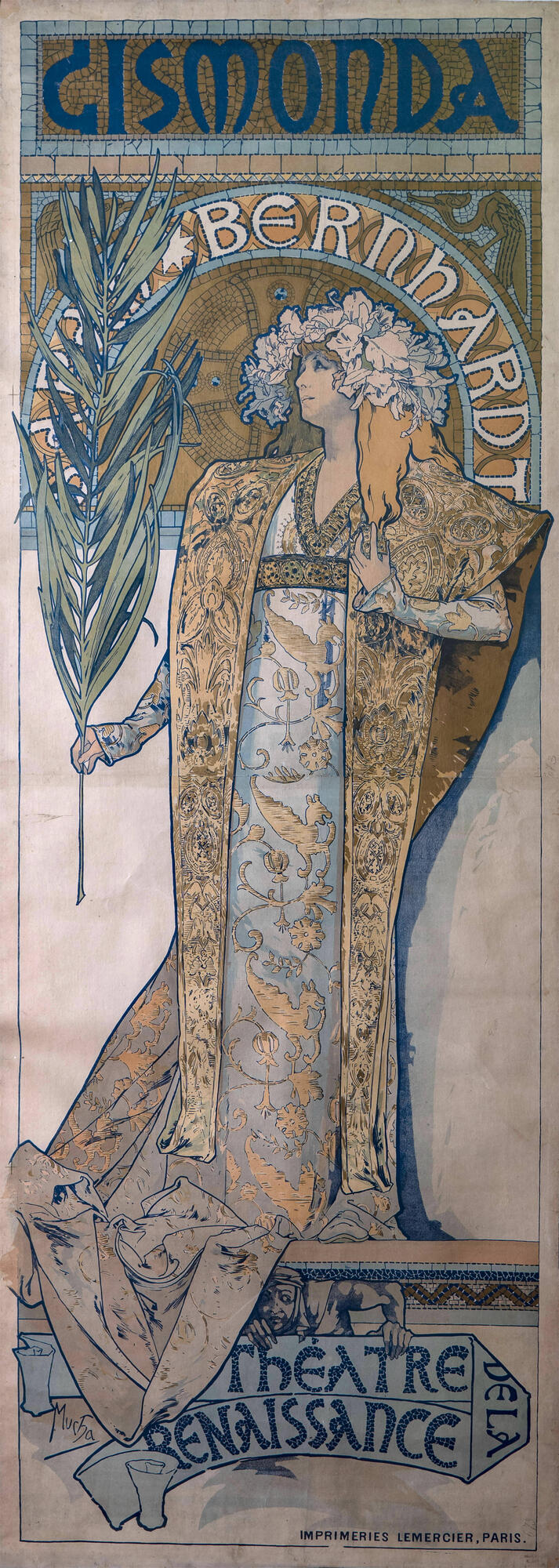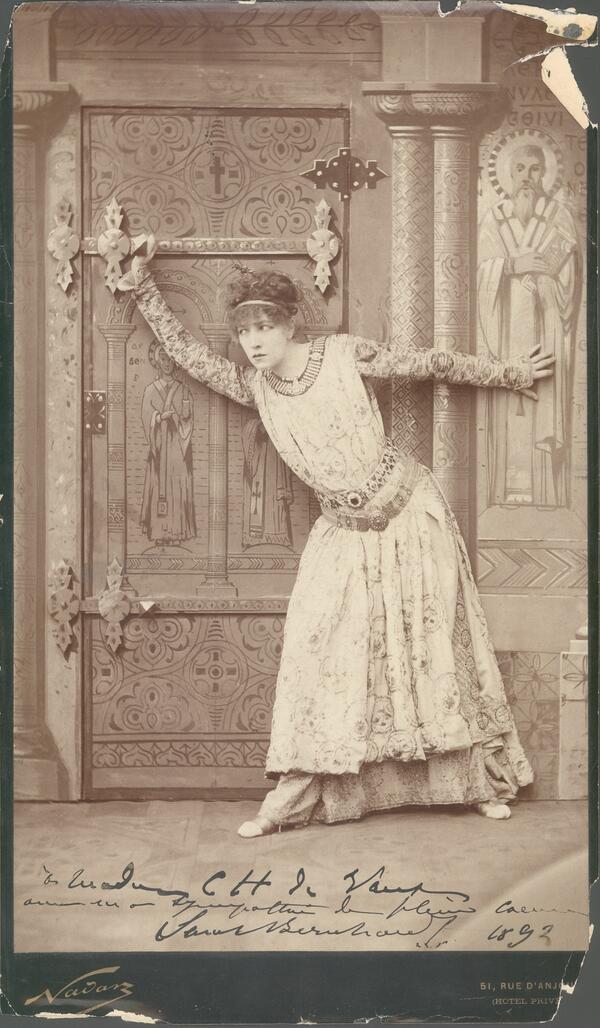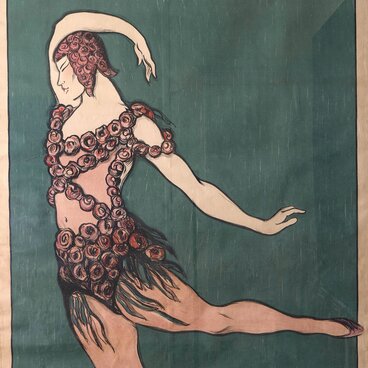The Museum of Theater and Music houses a poster for the play “Gismonda.” The poster depicts Sarah Bernhardt — an outstanding French actress who studied acting in the tragedy class of the Paris Conservatory and was named “the Divine Sarah” by her admirers. In 1862, she made her debut in the tragedy “Iphigénie” by Jean Racine staged at the Comédie Française. Throughout her career, the actress performed at various theaters playing young characters from classical and modern drama. The contemporary French playwrights wrote their plays with her acting in mind.
Sarah Bernhardt was especially known for her roles in the plays by Alexandre Dumas père, and the role of Marguerite Gautier in “The Lady with the Camellias” was considered her best one. In 1893, Sarah Bernhardt acquired the Théâtre de la Renaissance, and in 1898 she signed a lease for the Théâtre des Nations in the old part of Paris, at Place du Châtelet on the bank of the river Seine. The latter was renamed the Théâtre Sarah Bernhardt.
It was in that theater that Sarah Bernhardt played her first male roles — Hamlet from the eponymous tragedy by William Shakespeare and the Duc de Reichstadt from the play “L’Aiglon” by Edmond Rostand. That theater was also remarkable for Bernhardt’s performance as Racine’s Phédre at the age of 75 after her leg amputation. During the play, she was sitting in an armchair wearing a long dress.
The poster for the play “Gismonda” marked the beginning of the collaboration between the actress and the French painter Alphonse Mucha. He was the main stage designer of the Théâtre de la Renaissance for six years designing costumes and stage sets. He created a whole series of playbills and portraits of Sarah Bernhardt’s portraits for the plays “The Lady with the Camellias”, “Medea”, “La Samaritaine”, “La Tosca”, and “Hamlet.”
The experience of working for Sarah Bernhardt shaped Alphonse Mucha’s unique style. Extremely fine draftsmanship, ornate rainbow-shaped arches, and swirling floral images became constant features of the painter’s works.
Alphonse Mucha was an unknown artist when he created the poster for the play “Gismonda”, but he still managed to make quite an impression on Sarah Bernhardt. The painter changed the format of playbills so that he would be able to depict life-size characters. The vertical design made the actress look like a statue that came to life, and the entire composition seemed splendorous.
The center of the elongated panel is occupied by an image of an enigmatic woman with a captivating smile. She holds a palm branch, and her figure is circled by intricate floral and leafy ornaments, symbolic drawings, and entwining arabesques.
Sarah Bernhardt was especially known for her roles in the plays by Alexandre Dumas père, and the role of Marguerite Gautier in “The Lady with the Camellias” was considered her best one. In 1893, Sarah Bernhardt acquired the Théâtre de la Renaissance, and in 1898 she signed a lease for the Théâtre des Nations in the old part of Paris, at Place du Châtelet on the bank of the river Seine. The latter was renamed the Théâtre Sarah Bernhardt.
It was in that theater that Sarah Bernhardt played her first male roles — Hamlet from the eponymous tragedy by William Shakespeare and the Duc de Reichstadt from the play “L’Aiglon” by Edmond Rostand. That theater was also remarkable for Bernhardt’s performance as Racine’s Phédre at the age of 75 after her leg amputation. During the play, she was sitting in an armchair wearing a long dress.
The poster for the play “Gismonda” marked the beginning of the collaboration between the actress and the French painter Alphonse Mucha. He was the main stage designer of the Théâtre de la Renaissance for six years designing costumes and stage sets. He created a whole series of playbills and portraits of Sarah Bernhardt’s portraits for the plays “The Lady with the Camellias”, “Medea”, “La Samaritaine”, “La Tosca”, and “Hamlet.”
The experience of working for Sarah Bernhardt shaped Alphonse Mucha’s unique style. Extremely fine draftsmanship, ornate rainbow-shaped arches, and swirling floral images became constant features of the painter’s works.
Alphonse Mucha was an unknown artist when he created the poster for the play “Gismonda”, but he still managed to make quite an impression on Sarah Bernhardt. The painter changed the format of playbills so that he would be able to depict life-size characters. The vertical design made the actress look like a statue that came to life, and the entire composition seemed splendorous.
The center of the elongated panel is occupied by an image of an enigmatic woman with a captivating smile. She holds a palm branch, and her figure is circled by intricate floral and leafy ornaments, symbolic drawings, and entwining arabesques.










